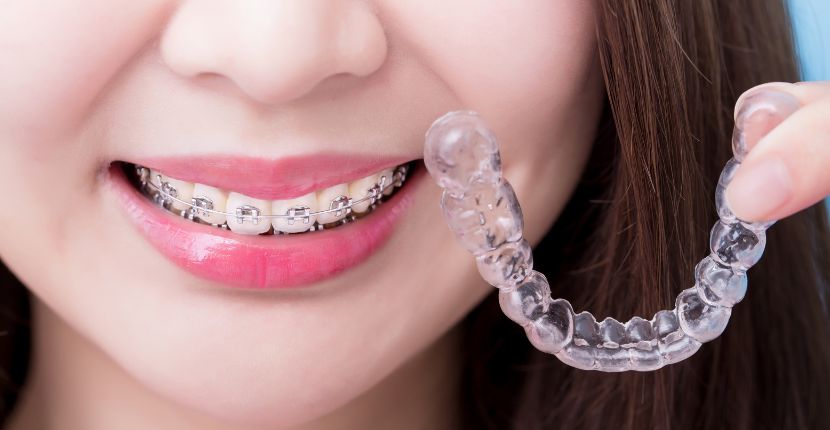10:00 AM to 8:30 PM (Mon - Sat)
10:00 AM to 2:00 PM (Sunday)
Dental Braces: Treatment and Options

Dental braces are an orthodontic treatment used to properly align teeth, relieve pressure on the temporomandibular joints, and align the upper and lower jaws. Braces are made of metal bands that are cemented to the molars and metal brackets that are directly glued to the front teeth. Orthodontists use this treatment to move a patient's teeth or underlying bone.
A person may inherit tooth crowding, misalignment, or similar problems from their parents. This is generally seen in children between the ages of six to twelve years old. Causes of a bad bite (or malocclusion) include extra teeth, an unaligned jaw, and muscular functional habits such as thumb-sucking in and beyond infancy. It is recommended to seek correction between ages eight and fourteen years old to achieve optimal results. Adults who seek to correct tooth alignment face more challenges than do children, and may have to wear retainers at night for the rest of their lives to continue to achieve best results. In adults, the jaw bone itself can be altered only by surgery. Treatment takes longer for adults because adult facial bones are no longer growing.
Types of braces include gold-plated stainless steel, clear, lingual, and titanium braces. There are various options to fit a patient's individual needs. For example, a person allergic to nickel might chose to wear gold-plated stainless steel or titanium braces. The cost of braces ranges from a couple thousand to several thousand dollars. Patients generally wear braces for two to three years. If a person has all his or her adult teeth, invisible braces may be used. Invisible braces are clear, plastic aligners that are worn for 22 to 23 hours a day and are replaced every two weeks by the next set.
Pain and discomfort is common after adjustment of braces. Therefore, a person may be unable to eat solid foods for a couple days after treatment. Soft foods and liquids are recommended during this time.
Patients usually wear retainers after the braces are removed to continue the process of alignment and to prevent further issues. These devices are custom-fit and made from plastic and metal. Patients wear them nightly and sometimes during the day as well. They can be fixed to the teeth or removable. The cost of a retainer ranges from $500 to $1,000 which includes X-rays and fittings. Retainers are typically worn for several years.
It is important to thoroughly clean the teeth in order to avoid tooth decay, gum disease, or even tooth loss. Regular appointments with the patient's orthodontist and proper cleaning assist in keeping the teeth, gums, and oral cavity healthy.


